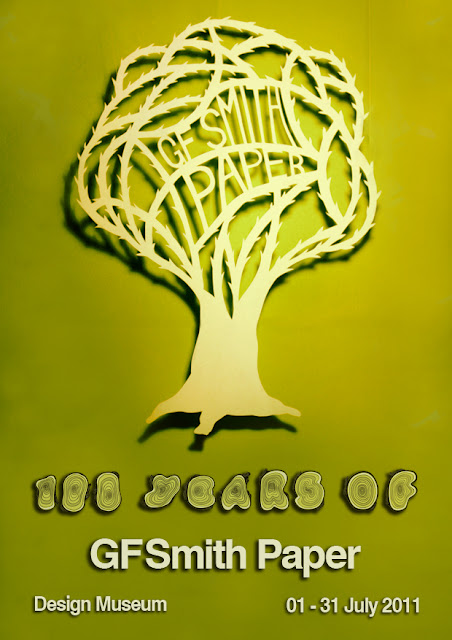I'm really pleased with how my poster turned out. I feel it portrays a vintage feel, suitable for marking 100 years as well as having a modern twist, letting the viewer know it's a current poster.
The 100 years is shown through the 100 rings in the tree stumps in the hand drawn typography. I wanted to use trees as a theme as that's ultimately where paper comes from. I was inspired by Rob Ryan's paper cut outs, and as I'm a long time fan of stencil art decided to try my hand at the intricate cutting involved. I'll be honest. I absolutely love the technique and it's definitely something I will be doing again. It was important for me to hand cut the paper, rather than using a laser cutter as I was hoping to show the natural side of the product. So it only seemed right to cut the paper by hand, not machine.


















